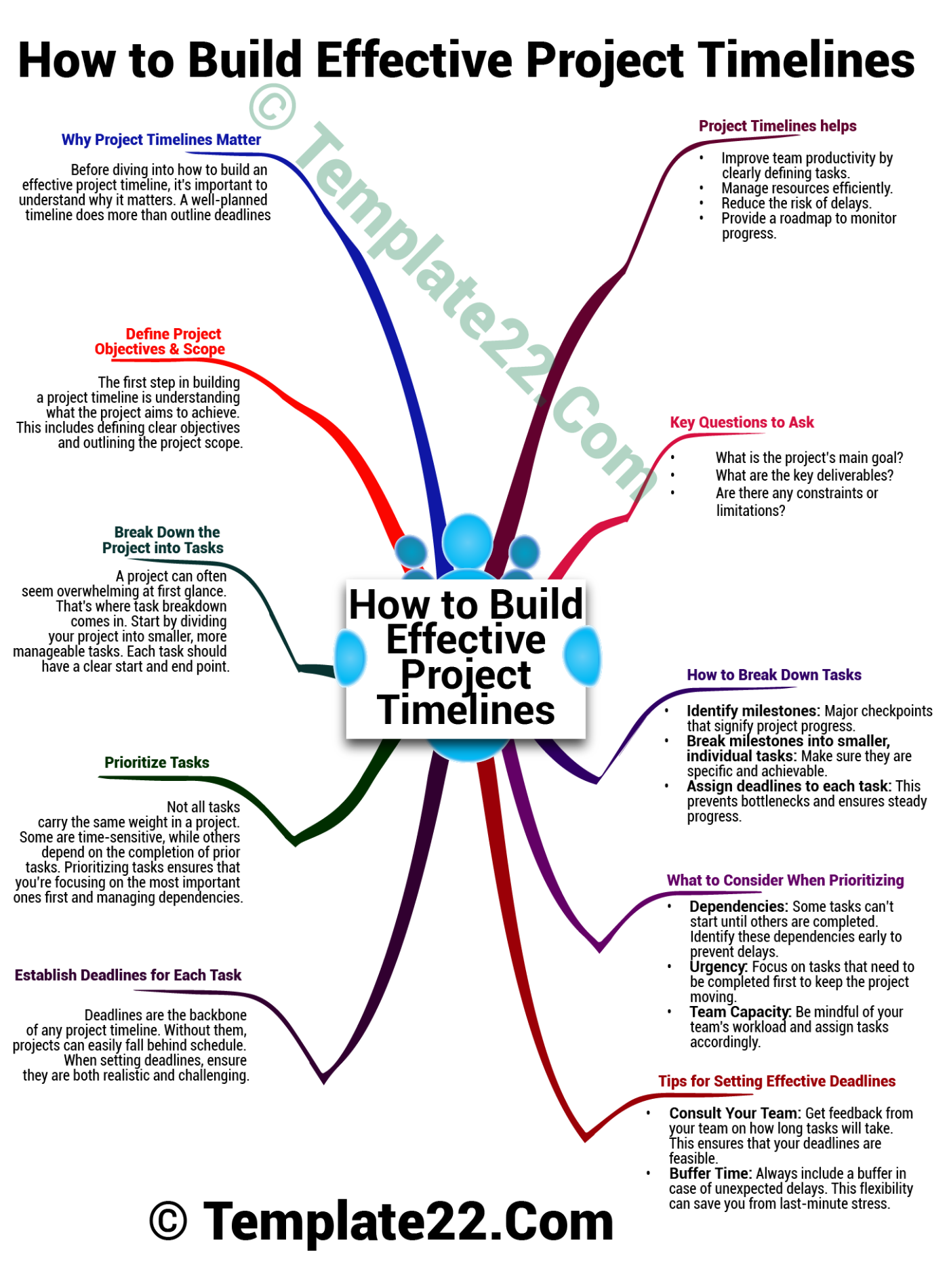 Effective Project Timeline Creation is one of the most crucial aspects of project management. It sets the foundation for project success, ensuring that tasks are completed on time, and resources are used efficiently. However, crafting a timeline that works for your team and project goals isn’t always straightforward. This guide walks you through creating a timeline that helps you stay on track while promoting smooth collaboration.
Effective Project Timeline Creation is one of the most crucial aspects of project management. It sets the foundation for project success, ensuring that tasks are completed on time, and resources are used efficiently. However, crafting a timeline that works for your team and project goals isn’t always straightforward. This guide walks you through creating a timeline that helps you stay on track while promoting smooth collaboration.
Why Project Timelines Matter
Before diving into how to build an effective project timeline, it’s important to understand why it matters. A well-planned timeline does more than outline deadlines; it helps:
- Improve team productivity by clearly defining tasks.
- Manage resources efficiently.
- Reduce the risk of delays.
- Provide a roadmap to monitor progress.
Timelines make complex projects manageable, breaking them into smaller, actionable steps. Without a structured timeline, it’s easy to lose track of priorities, leading to missed deadlines and project derailment.
1. Define Project Objectives and Scope
The first step in building a project timeline is understanding what the project aims to achieve. This includes defining clear objectives and outlining the project scope.
Key Questions to Ask:
- What is the project’s main goal?
- What are the key deliverables?
- Are there any constraints or limitations?
Once you have a detailed project scope, it’s easier to break down the tasks that will move the project forward. With this clarity, you can begin mapping out your timeline, knowing exactly what you need to accomplish.
2. Break Down the Project into Tasks
A project can often seem overwhelming at first glance. That’s where task breakdown comes in. Start by dividing your project into smaller, more manageable tasks. Each task should have a clear start and end point.
CLICK HERE TO DOWNLOAD 300+ PROJECT MANAGEMENT TEMPLATES & DOCUMENTS IN EXCEL
How to Break Down Tasks:
- Identify milestones: Major checkpoints that signify project progress.
- Break milestones into smaller, individual tasks: Make sure they are specific and achievable.
- Assign deadlines to each task: This prevents bottlenecks and ensures steady progress.
By breaking down the project, you’re turning a daunting task into a series of achievable steps, which makes it easier to stay organized.
3. Prioritize Tasks
Not all tasks carry the same weight in a project. Some are time-sensitive, while others depend on the completion of prior tasks. Prioritizing tasks ensures that you’re focusing on the most important ones first and managing dependencies.
What to Consider When Prioritizing:
- Dependencies: Some tasks can’t start until others are completed. Identify these dependencies early to prevent delays.
- Urgency: Focus on tasks that need to be completed first to keep the project moving.
- Team Capacity: Be mindful of your team’s workload and assign tasks accordingly.
Once your tasks are prioritized, you’re in a better position to create a realistic and flexible project timeline.
4. Establish Deadlines for Each Task
Deadlines are the backbone of any project timeline. Without them, projects can easily fall behind schedule. When setting deadlines, ensure they are both realistic and challenging.
Tips for Setting Effective Deadlines:
- Consult Your Team: Get feedback from your team on how long tasks will take. This ensures that your deadlines are feasible.
- Buffer Time: Always include a buffer in case of unexpected delays. This flexibility can save you from last-minute stress.
- Track Progress Regularly: As the project moves forward, regularly check if the team is meeting deadlines. Adjust your timeline if necessary.
Deadlines should drive progress, not create unnecessary pressure. Striking a balance is key.
5. Use a Gantt Chart or Project Management Tool
Visualizing your timeline can make it easier to track progress and spot potential issues before they arise. A Gantt chart or project management tool can help.
Why Use Visualization Tools:
- Clear Overview: A visual timeline shows the start and end dates for each task, making it easy to understand project progress at a glance.
- Task Dependencies: Gantt charts highlight task dependencies, helping you plan for bottlenecks and prioritize critical tasks.
- Collaboration: Project management tools allow for better team collaboration, enabling everyone to stay aligned with the project timeline.
Popular tools like Microsoft Project, Trello, or Asana offer built-in features for Effective Project Timeline Creation.
6. Allocate Resources Wisely
Resource management is a key aspect of building an effective project timeline. This means ensuring you have the right people, tools, and budget to complete tasks on time.
Tips for Resource Allocation:
- Assign Roles and Responsibilities: Clearly define who is responsible for each task to avoid confusion.
- Monitor Resource Usage: Keep an eye on how resources are being used to ensure no one is overburdened or underutilized.
- Plan for Resource Conflicts: If a team member is working on multiple tasks, account for their availability and adjust the timeline accordingly.
Proper resource allocation prevents overloading your team and ensures that tasks are completed on time.
CLICK HERE TO DOWNLOAD 300+ PROJECT MANAGEMENT TEMPLATES & DOCUMENTS IN EXCEL
7. Monitor and Adjust the Timeline
A project timeline is not set in stone. As the project progresses, you may encounter unforeseen challenges that require you to adjust the timeline. Regularly monitoring the project allows you to spot potential issues early and make the necessary adjustments.
Key Actions for Monitoring:
- Track Milestones: Ensure milestones are being met and adjust if any are delayed.
- Review Team Progress: Hold regular check-ins to assess if tasks are being completed on time.
- Adjust Deadlines if Necessary: Flexibility is essential. If one task takes longer than expected, adjust the rest of the timeline accordingly.
Monitoring the timeline helps keep the project on track, even when things don’t go as planned.
Final Thoughts
An Effective Project Timeline Creation requires careful planning, task prioritization, and ongoing monitoring. By breaking down your project into manageable tasks, setting realistic deadlines, and using the right tools, you can ensure your timeline is both efficient and adaptable. Keep in mind that flexibility is just as important as structure—being able to adjust as the project evolves will help ensure its success.
